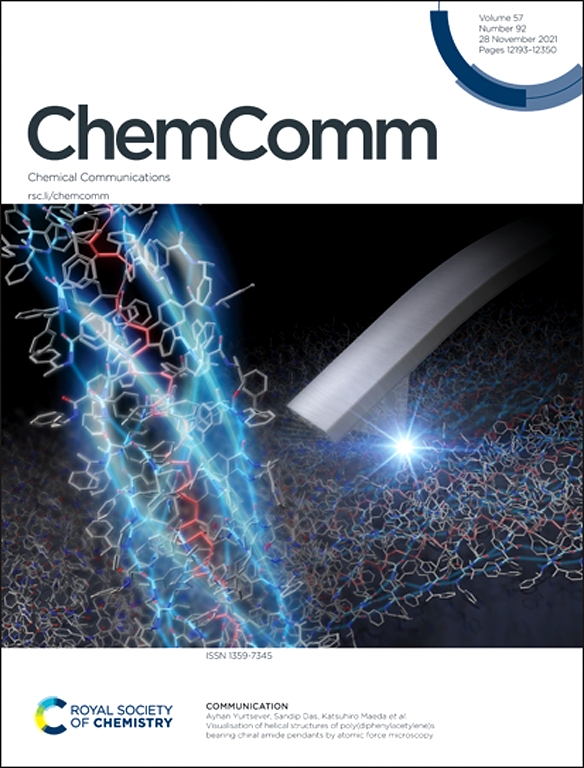用于时间分辨生物成像的矿物酸触发多色室温磷光纳米探针
IF 4.2
2区 化学
Q2 CHEMISTRY, MULTIDISCIPLINARY
引用次数: 0
摘要
我们提出了一种简便的策略,通过交联工艺在有机硅支架中掺杂矿物酸(即硼酸和磷酸)来实现颜色可调的室温磷光(RTP)纳米探针。这种 RTP 纳米探针具有固有的可调磷光(420-650 纳米)、长寿命(发射持续约 5-15 秒,RTP 寿命:约 0.53-2.11 秒)和高量子产率(约 13.1-43.0%)。因此,制备的纳米探针可在活细胞中进行多重成像,信噪比高达约 52。本文章由计算机程序翻译,如有差异,请以英文原文为准。

Mineral acid-triggered multicolor room-temperature phosphorescence nanoprobes for time-resolved bioimaging†
We present a facile strategy to achieve color-tunability room-temperature phosphorescence (RTP) nanoprobes by doping mineral acids (i.e., boric acid and phosphoric acid) in an organic silicon scaffold through a cross-linking process. Such RTP nanoprobes exhibit inherent tunable phosphorescence (from 420–650 nm) with long lifetime (emission lasting for ∼5–15 s, RTP lifetime: ∼0.53–2.11 s) and high quantum yields (∼13.1–43.0%). Therefore, the as-prepared nanoprobes enable multiple imaging in live cells with a high signal-to-background ratio value of ∼52.
求助全文
通过发布文献求助,成功后即可免费获取论文全文。
去求助
来源期刊

Chemical Communications
化学-化学综合
CiteScore
8.60
自引率
4.10%
发文量
2705
审稿时长
1.4 months
期刊介绍:
ChemComm (Chemical Communications) is renowned as the fastest publisher of articles providing information on new avenues of research, drawn from all the world''s major areas of chemical research.
 求助内容:
求助内容: 应助结果提醒方式:
应助结果提醒方式:


